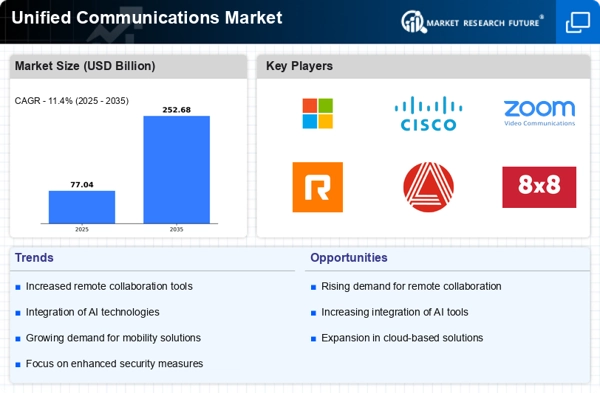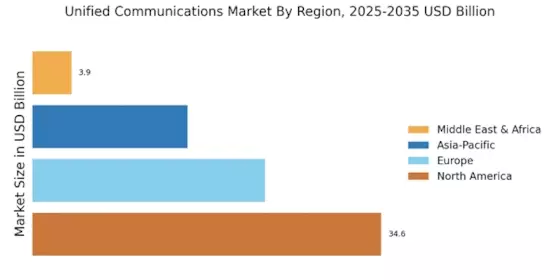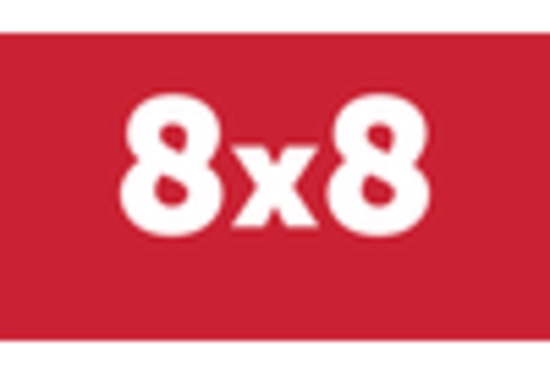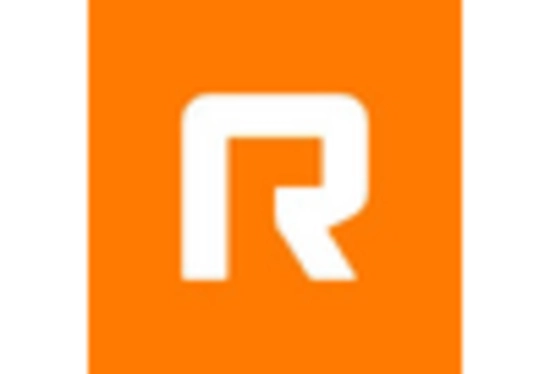The Unified Communications Market is currently characterized by a dynamic competitive landscape, driven by rapid technological advancements and an increasing demand for integrated communication solutions. Major players such as Microsoft (US), Cisco (US), and Zoom Video Communications (US) are at the forefront, each adopting distinct strategies to enhance their market positioning. Microsoft (US) focuses on continuous innovation within its Teams platform, integrating AI capabilities to streamline user experiences. Cisco (US), on the other hand, emphasizes strategic partnerships and acquisitions to bolster its portfolio, particularly in security and collaboration tools. Zoom Video Communications (US) has been expanding its offerings beyond video conferencing, venturing into areas like event management and customer engagement solutions, thereby diversifying its operational focus. Collectively, these strategies not only enhance individual company profiles but also intensify competition within the market, as firms strive to differentiate themselves through technological advancements and comprehensive service offerings.
In terms of business tactics, companies are increasingly localizing their operations and optimizing supply chains to respond to regional demands effectively. The Unified Communications Market appears moderately fragmented, with a mix of established players and emerging startups. This structure allows for a diverse range of solutions, catering to various customer needs. The collective influence of key players shapes market dynamics, as they engage in competitive practices that drive innovation and customer-centric approaches.
In August 2025, Microsoft (US) announced the launch of a new AI-driven feature within its Teams platform, aimed at enhancing real-time collaboration and productivity. This strategic move underscores Microsoft's commitment to integrating advanced technologies into its offerings, potentially setting a new standard for user engagement in unified communications. The introduction of AI capabilities not only enhances functionality but also positions Microsoft as a leader in the market, likely attracting a broader customer base seeking innovative solutions.
In September 2025, Cisco (US) completed the acquisition of a cybersecurity firm, enhancing its security offerings within its unified communications solutions. This acquisition is strategically significant as it aligns with the growing emphasis on security in digital communications. By integrating robust security features, Cisco aims to address customer concerns regarding data protection, thereby strengthening its competitive edge in a market where security is paramount.
In July 2025, Zoom Video Communications (US) launched a new customer engagement platform designed to facilitate seamless interactions between businesses and their clients. This initiative reflects Zoom's strategic pivot towards enhancing customer experience, moving beyond traditional video conferencing. By diversifying its service offerings, Zoom positions itself to capture a larger share of the market, appealing to businesses looking for comprehensive communication solutions.
As of October 2025, the competitive trends within the Unified Communications Market are increasingly defined by digitalization, sustainability, and the integration of AI technologies. Strategic alliances are becoming more prevalent, as companies recognize the value of collaboration in enhancing their service offerings. Looking ahead, competitive differentiation is likely to evolve, shifting from price-based competition to a focus on innovation, technological advancements, and supply chain reliability. This transition suggests that companies will need to invest in research and development to maintain their competitive positions, ultimately benefiting consumers through enhanced service quality and innovation.


















Leave a Comment